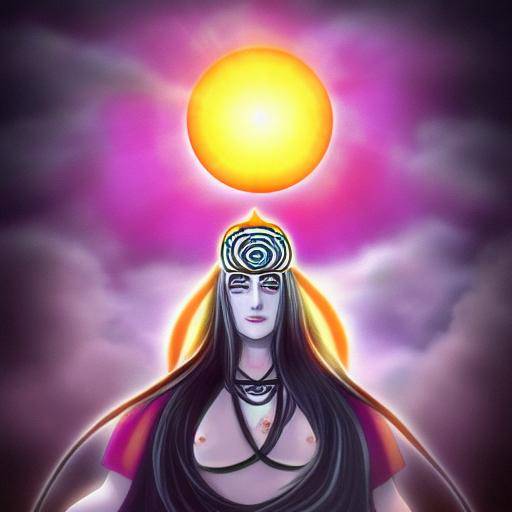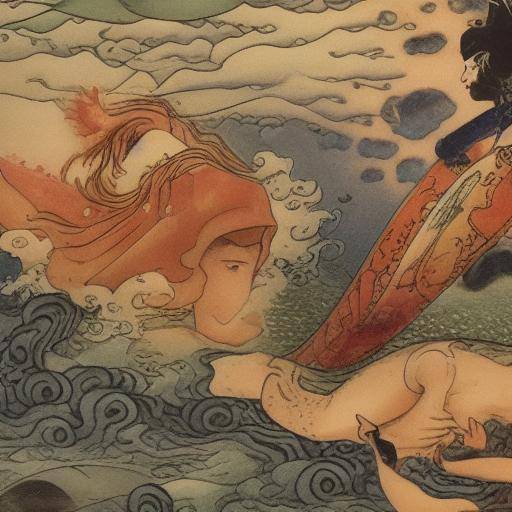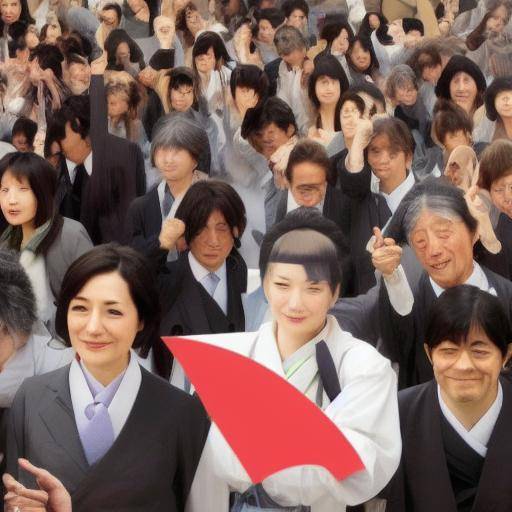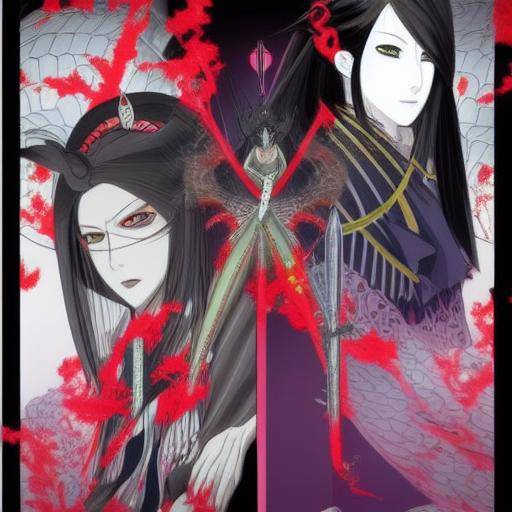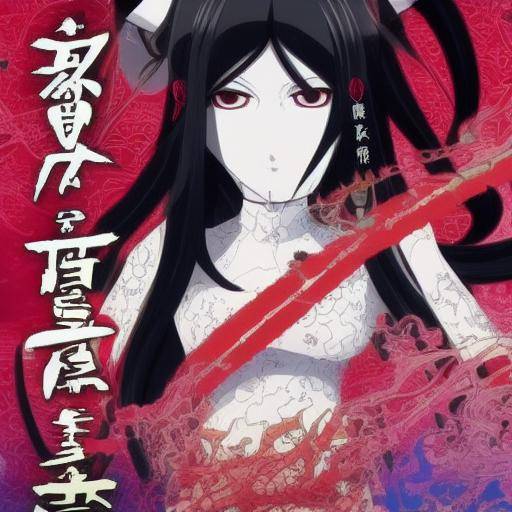
In the rich upholstery of Japanese mythology, the history of Izanagi and Izanami occupies a prominent place. His account of love, creation and tragedy is fundamental to understanding the origin of the world according to the Japanese tradition. In this article, we will explore in detail the myth of Izanagi and Izanami, the creation of Japan and its relevance in Japanese mythology.
Introduction
Japanese mythology is a fascinating universe of gods, heroes and mythical creatures that has captivated generations throughout the centuries. In the center of this rich tradition is the myth of Izanagi and Izanami, a story that goes back to the very origins of the world according to the Japanese cosmovision.
In this article, we will immerse ourselves in the intriguing account of Izanagi and Izanami, exploring its role in the creation of Japan and its profound influence on Japanese mythology. From the most intimate details of its history to its lasting impact on Japanese culture, we will discover the nuances of this fascinating myth and its relevance today.
History and Background
To fully understand the myth of Izanagi and Izanami, it is essential to get into the history and background that shaped this narrative. Japanese mythology has deep roots dating back centuries, and the myth of Izanagi and Izanami is a central part of this rich legacy.
This myth originates in Kojiki and Nihon Shoki, two Japanese mythological stories that describe the creation of the world and the lineage of the Japanese gods. According to these narratives, Izanagi and Izanami were appointed by the superior deities to create the islands of Japan and populate them with living beings.
The story of Izanagi and Izanami begins with their union to carry out the creation, but unfortunately, their tragedy develops as they face unexpected challenges. The death of Izanami in the birth of Kagutsuchi, the god of fire, marked a crucial point in myth and had profound consequences for the land and life in Japan.
Deep analysis
The myth of Izanagi and Izanami also offers an opportunity for a thorough analysis of the complexities of Japanese mythology. Understanding the symbolic and metaphorical implications of this history not only enriches our knowledge of Japanese culture, but also offers unique perspectives on the human condition and the universe itself.
By exploring the underlying meanings of events that take place in the myth, we can unravel the emotional, social and spiritual complexities that have shaped the Japanese worldview over time. The tragedy of Izanagi and Izanami, their mourning and their efforts to redress the consequences of their pain reveal fundamental aspects of human nature and the constant struggle for balance and renewal.
Comprehensive review
The myth of Izanagi and Izanami also lends itself to a comprehensive examination covering both its historical influence and its contemporary resonance. As we explore the many facets of this history, from its impact on Japanese society to its interpretations in modern art and literature, there is a more complete understanding of its lasting importance.
This myth has left an indelible mark on Japanese culture, permeating different aspects of society and contributing to the formation of collective identities. From traditional festivals that honor Izanagi and Izanami to artistic manifestations that reinterpret their history, the influence of this myth is palpable in the daily life and creative expression of Japan.
Comparative analysis
In a comparative analysis, it is essential to recognize the unique position of Izanagi and Izanami in the broader context of Japanese mythology. The way his story intertwines with other mythical accounts, often breaks the conventional borders of mythology and raises questions about the very nature of creation and divinity in the Japanese imaginary.
Practical Tips and Accessible Recommendations
In exploring the myth of Izanagi and Izanami, it is also essential to provide practical advice and actionable recommendations for those interested in getting deeper into this fascinating topic. From additional reading suggestions to guides to understand the iconography associated with Izanagi and Izanami, these recommendations offer a way for personal appreciation and academic study.
Recommended readings:
- "Kojiki" and "Nihon Shoki": The two works that present the myth of Izanagi and Izanami in detail.
- “The Kojiki: An Account of Ancient Matters” by Gustav Heldt: An academic reference that provides an integral vision of Kojiki and its importance in understanding Japanese mythology.
Guides to interpret the associated iconography:
- Identify the symbols of Izanagi and Izanami: Discover and understand the symbols and visual representations associated with these gods.
- Explore iconography in Japanese art: Dive into the rich Japanese artistic tradition and seek representations of Izanagi and Izanami in various forms of visual expression.
Conclusions and FAQs
Conclusions
The myth of Izanagi and Izanami is a cornerstone of Japanese mythology that offers a penetrating look at the depths of the human soul and Japanese theology. Its lasting influence extends far beyond the pages of ancient texts, continuing its vibrant existence in contemporary Japanese culture and beyond.
Frequently asked questions
1. What is the meaning of the myth of Izanagi and Izanami in Japanese mythology?
The myth of Izanagi and Izanami is fundamental to understanding Japan's creation and origin in Japanese tradition. It also symbolizes deeper concepts related to duality, creation and death.
2. How is the myth of Izanagi and Izanami celebrated in Japan today?
The myth of Izanagi and Izanami is celebrated through festivals, theatrical performances and contemporary artistic manifestations that seek to honor and reinterpret their legacy.
3. What lessons can we draw from the myth of Izanagi and Izanami for everyday life?
This myth offers teachings on the importance of harmony between humanity and nature, the acceptance of duality in life and perseverance against adversity.
4. How has the myth of Izanagi and Izanami influenced modern pop culture in Japan?
The myth of Izanagi and Izanami has been a source of inspiration for various artistic productions, from literature and theatre to animation and video games, demonstrating their lasting impact on pop culture.
5. Does the myth of Izanagi and Izanami still have relevance in contemporary Japanese society?
Yes, the myth of Izanagi and Izanami remains relevant in Japanese society, as it influences cultural practices, spirituality and national identity.
6. How can I learn more about the myth of Izanagi and Izanami and its context in Japanese mythology?
There are numerous academic, literary and artistic resources available for those who wish to delve into the study of the myth of Izanagi and Izanami, including books, academics and cultural exhibitions.
In conclusion, the myth of Izanagi and Izanami is a fascinating window to the rich narrative of Japanese mythology, which continues to inspire and captivate those who seek to understand the cultural and spiritual roots of Japan. From its symbolic meaning to its influence on everyday life, this myth remains an inexhaustible source of wisdom and reflection.
With its deep interconnection with Japanese culture, its relevance is timeless, demonstrating that ancient stories continue to resonate and enrich our lives in the present. In exploring the depths and complexities of the myth of Izanagi and Izanami, we immerse ourselves in a world of meaning, beauty and wisdom that continues to illuminate the soul of modern Japan and the whole world.
Always remember that getting into the vast world of Japanese mythology is a fascinating journey that offers a unique understanding of Japan's culture, history and vision. May this exploration inspire you to discover more about the wonders of Japanese mythology and its lasting legacy!

